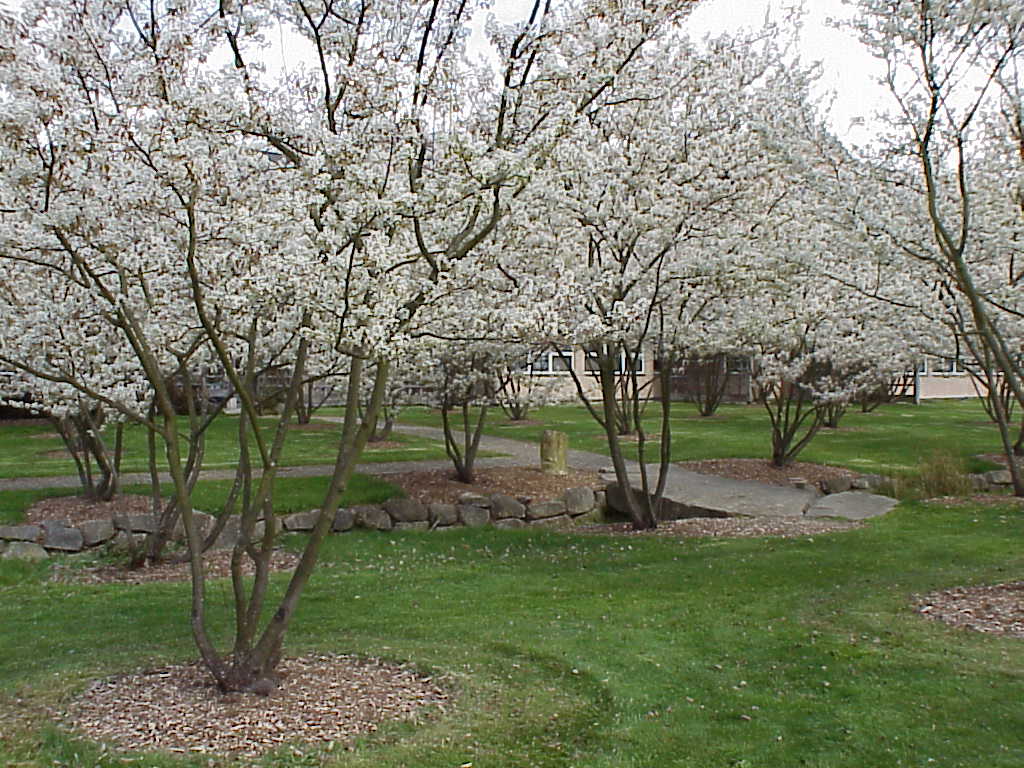 Height: 15-25 feet
Height: 15-25 feet
Spread: 15-25 feet
Type: tree
Origin: Hybrid of two native Amelanchier species: Laevis and Canadensis
Exposure: Full sun to part shade
Water: medium
Edible: serviceberries are very similar to blueberries in flavor and appearance. They can be used in pies, jams, and jellies or simply eaten raw. This is truly one of the sweetest and tastiest native fruits.
Medicinal: Native Americans used serviceberry for a variety of different purposes from toothaches to cold remedies and more.
Companions: Quercas (oaks), Celtis occidentalis (hackberry), Chasmanthium latifolium (river oats), Heuchera (coral bells)
Notes: Being a hybrid this particular variety of serviceberry has been cultivated for the best qualities of fruit production, blooms and fall color. The blooms start in April giving way to the fruit in June (they are also called Juneberries.) The leaves on the apple serviceberry are fantastic. In early spring they emerge with bronze tints which change to dark green from summer until fall when they turn a stunning red or orange-red. Serviceberries are under story trees best grown under the dappled shade of a larger tree but given enough moisture and fertile soil they can tolerate some sun. Best to at least provide some afternoon shade and make sure to give adequate water. Once established they can be somewhat drought tolerant but generally like moist soils. If left un-pruned a suckering bushy colony may form but keeping it trimmed into a single or multi-trunked tree form doesn’t require much work. Just prune off suckers as they appear (mainly in spring). This small tree really has all of the qualities which make for a standout edible landscaping plant. Even if you don’t eat the berries the birds and other wildlife really love them too. “Autumn Brilliance” is really a no brainer for most landscapes. Many of the other Amelanchier native species are also good candidates for landscape use.
